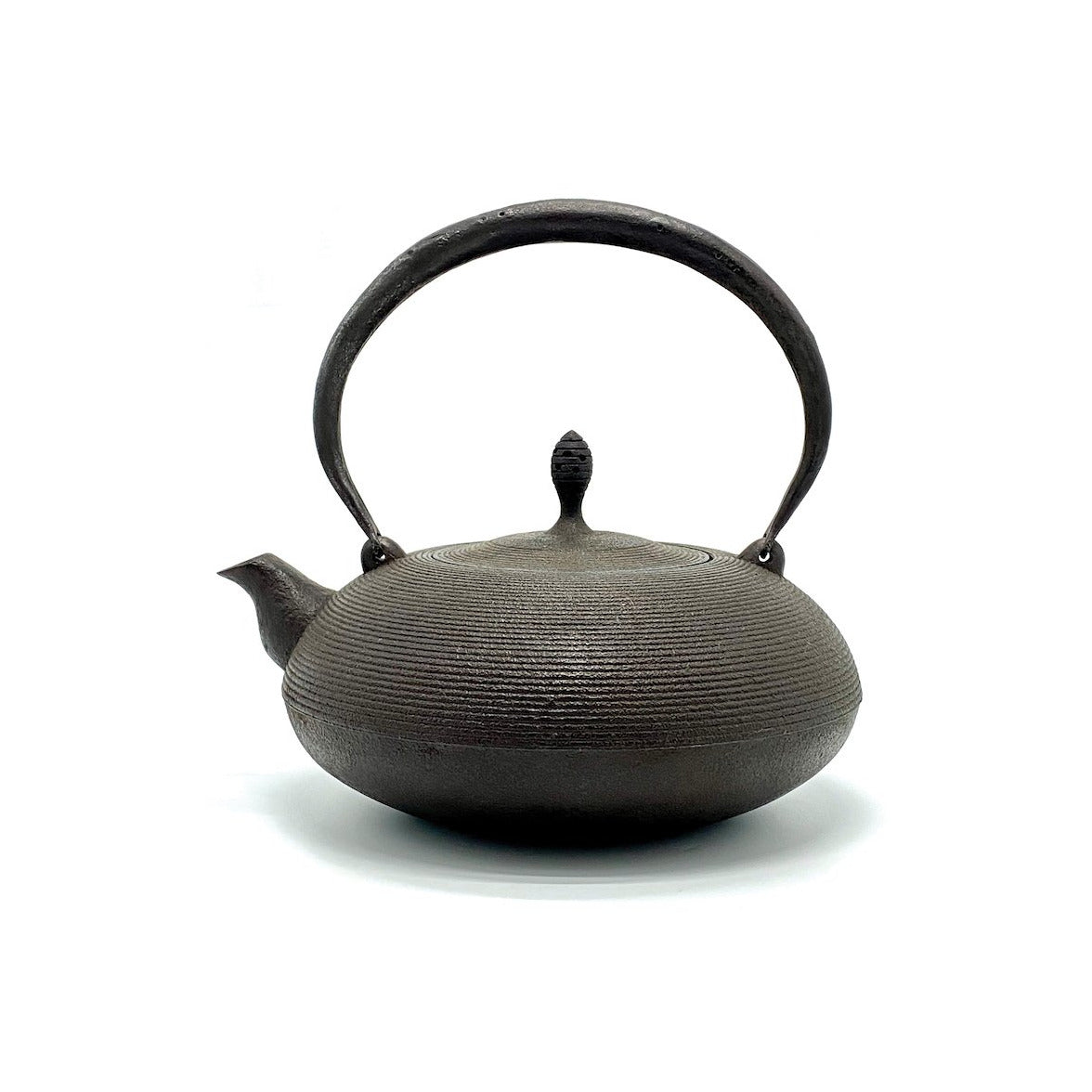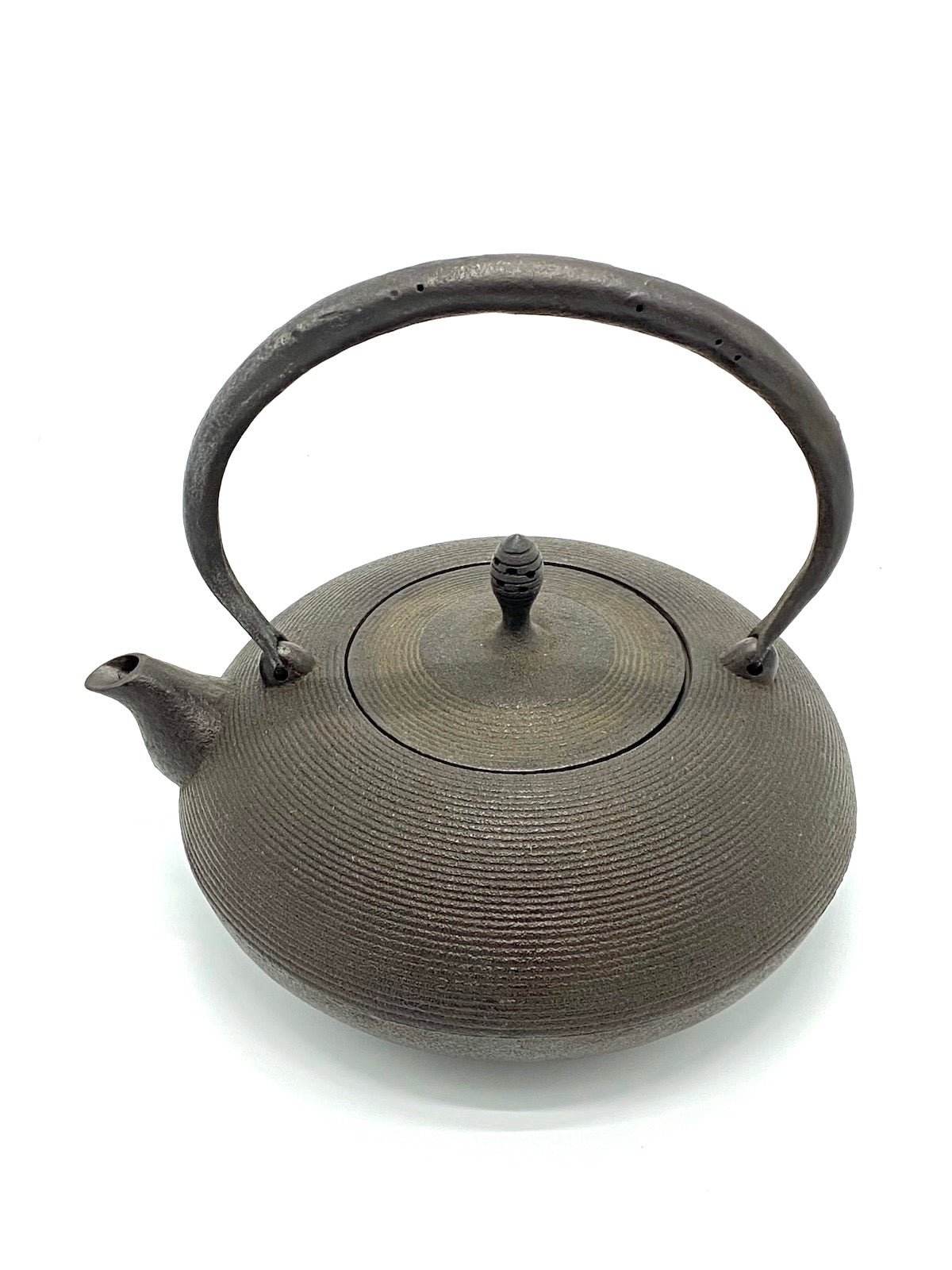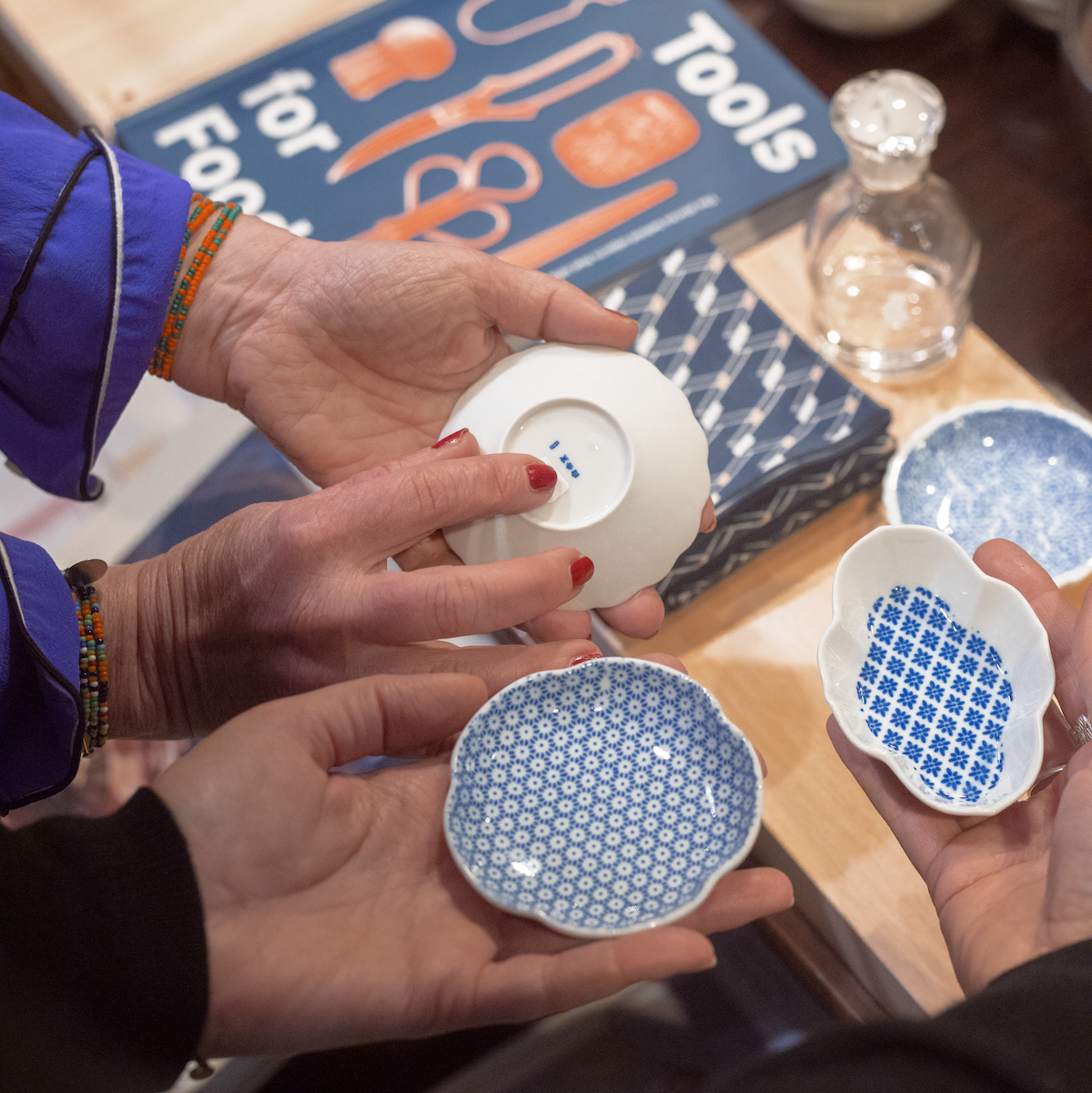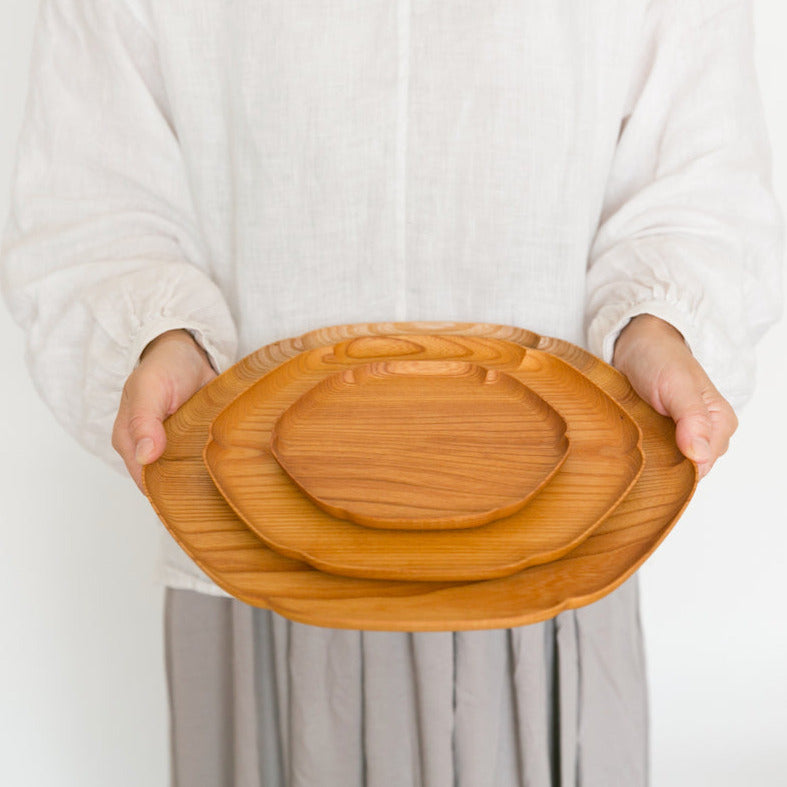








Cast Iron Kettle | Itomemon Tetsubin
Kostenfreier Versand ab CHF 100,-
- Material: cast iron.
- Colour: mmetallic-brown shimmering
- Dimension: 18.7 x 19cm (diameter x height)
- Weight: 1.7 Kg
- Texture: thread pattern
-
Filling volume: 1.3 litres
. - Gift box
- Handmade in Iwate Japan
Choose options









Beschreibung
Cast iron Tetsubin kettle Itomemon Futongata "thread pattern" by Suzuki Morihiasa Studio Foundry. Each piece is made using the sand-casting process, with the motifs embossed by hand using a single embossing. After the molten iron has cooled, the sand mould is broken and a new mould is made for each kettle. The iron kettles mellow the taste of the water and maintain higher boiling temperatures than other materials. Japanese iron kettles are highly sought after by lovers of puerh and aged oolong, and due to high demand, they take about one to two years to complete.
This handmade product is unique and may vary slightly in colour, pattern, shape and size
.Each tea kettle comes in a signed wooden box with silk ribbons.
Suzuki was able to hire on as an order caster in Koshu in the homeland of a Nanbu family from 1625. The Suzuki family cast Buddhist altar fittings, a temple bell and served the order of the feudal clan from generation to generation. Morihisa in the 13th generation received national designation as an intangible cultural property in 1974, on which he was to have a breakthrough by setting a record. And Ararenanbugata iron kettle (Suzuki family 11th generation Kihachi make) became a commemorative stamp of a series of traditional handicrafts of sale on August 8, 1985. Making continues, defending traditional technology at present.
About Nambu Tekki
During the Keicho years of the Edo period (1603-1868), Toshinao, the 27th king of the Nanbu clan, built a castle in Morioka City (Furaihoujou) and planned the development of the city's districts. He also established the beginnings of various crafts, including Nanbu Tekki. The iron used for the Nanbu furnace was made from iron sand found in the Kokonohe area of the Nanbu clan, and the iron ore, gantetsu, was extracted from the Kamaishi, Ohashi and Kuriki areas.

Wollt ihr wissen wer hinter ASANDRI steht
«Wir glauben, dass die Kombination von grossartigem Design und handwerklichen Können wichtig ist. Deshalb unterstützen wir Handwerker weltweit, um ihre Fähigkeiten und Handwerksbetriebe für viele weitere Generationenzu erhalten.»
Kontaktiere uns: info@asandri.com

